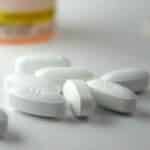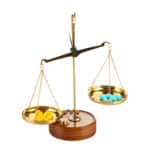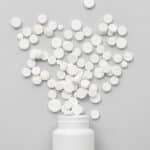Ritalin Vs. Desoxyn | Similarities & Differences
Ritalin and Desoxyn are similar in that they can both treat attention deficit hyperactivity disorder, or ADHD.
When used as ADHD medications, both drugs can improve wakefulness, problem-solving, focus, and executive function. Both Ritalin and Desoxyn are brand name prescription stimulant drugs.
Desoxyn’s main ingredient is methamphetamine, a type of amphetamine. Ritalin’s main ingredient is methylphenidate hydrochloride, which is not an amphetamine. Ritalin may treat narcolepsy, a sleeping disorder, while Desoxyn may be used in the treatment of chronic obesity.
Ritalin and Desoxyn share potential side effects, including sleeping problems, increased heart rate, weight loss, and headache. Both drugs are controlled substances with a high potential for drug abuse.
Similarities Between Ritalin & Desoxyn
Ritalin and Desoxyn are both central nervous system stimulant medications that can increase brain activity. Both drugs can treat ADHD by improving problem-solving and decreasing impulsiveness.
Both Ritalin and Desoxyn affect dopamine levels in the brain. Dopamine is a neurotransmitter that can control motivation, reward, pleasure, and focus.
Side Effects Of Ritalin & Desoxyn
Common short-term side effects of both Ritalin and Desoxyn include:
- increased heart rate
- high blood pressure
- dry mouth
- insomnia
- headache
- dizziness
Ritalin and Desoxyn also share potential serious side effects, such as cardiovascular and heart problems, psychosis, and long-term growth suppression in children and adolescents. The potential for serious side effects may increase if these drugs are abused.
Ritalin and Desoxyn may have harmful drug interactions with monoamine oxidase inhibitors (MAOIs), a type of antidepressant. They may also be dangerous when taken with alcohol.
Differences Between Ritalin & Desoxyn
Ritalin’s main ingredient is methylphenidate, a stimulant. Desoxyn’s main ingredient is methamphetamine, a potent amphetamine.
Chemical Structure
The chemical structure of Desoxyn is more similar to other amphetamines, such as dextroamphetamine (Adderall, Dexedrine), than it is to methylphenidate.
Formulations
Ritalin is available in immediate-release and extended-release formulations. It is also available as a chewable oral tablet or capsule. Desoxyn’s only approved use is as an immediate-release oral tablet.
Ritalin may also affect norepinephrine and serotonin levels in the CNS. The effect Desoxyn has on these neurotransmitters is unknown.
Drug Overdose
It is possible to overdose on both Ritalin and Desoxyn, especially in high doses. Overdose symptoms may differ between these drugs.
Overdose symptoms of Ritalin include delirium, flushing, and fever. Overdose symptoms of Desoxyn may include trouble urinating, chest pain, and paranoia.
Both Ritalin and Desoxyn overdoses can be life-threatening. If you see signs of an overdose in yourself or a loved one, call for help immediately.
Treatment Options For Stimulant Medication Abuse
Although they have different chemical structures, side effects, and doses, stimulant medications also have some similarities. One similarity Ritalin, Desoxyn, Adderall, and Concerta may share is their high potential for drug abuse.
Abusing ADHD medications for a long period of time can be detrimental to your health. It can be difficult to quit abusing stimulants and amphetamines due to their habit-forming nature.
For information on our outpatient treatment programs, please contact us today.
Sources
Written by
Northeast Addition Editorial Team
©2024 Northeast Addition Center | All Rights Reserved
This page does not provide medical advice.







